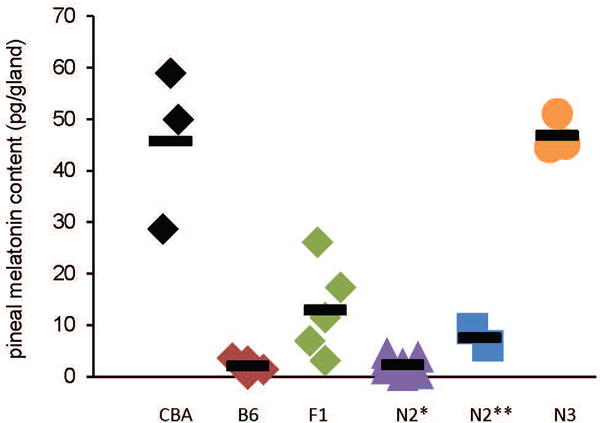Figure 2.

Functional Aanat and Asmt alleles rescued nocturnal pineal melatonin biosynthesis in B6 congenic mice. Each dot represents an individual animal; horizontal short lines represent group means. Pineal glands were collected at CT19-CT20 in the dark. F1: double heterozygous for CBA alleles; N2*: maximum 1 CBA-type allele in either gene; N2**: double heterozygous for CBA-type alleles; N3: double homozygous for CBA-type alleles. The population variances are not significantly different [Brown-Forsythe test; F(5,15) = 2.402 (P = 0.0778)] but the population means are significantly different [one-way ANOVA: F(5,15) = 32.470 (P = 2.105E-8)]. Tukey post-hoc analysis indicates that CBA and N3 groups are not statistically different to one another (P > 0.5) but each is different from the other 3 groups (i.e. F1, N2*, and N2**) (P < 0.001); none of the F1, N2*, and N2** groups is significantly different from the 2 others (P > 0.05). n = 2-7.
